It is time, my friends, to finally return to the mists. Since its debut in 1983, Ravenloft aka The Demiplane of Dread, has fascinated D&D fans with its dark aesthetics and many homages to the horror genre who’s fans so frequently overlap with the D&D fanbase. While Curse of Strahd has been the biggest hit Fifth Edition, the rest of the Domains of Dread haven’t been visited since third edition, when the setting was largely being handled by White Wolf Publishing. But now, the newest setting book Van Richten’s Guide To Ravenloft returns to the greater Ravenloft demiplane with plenty of updates and changes to the classic lore as well as tools for DM’s to use in service of horror games in D&D. Set to launch on May 18th, Wizards sent along a mist token so I could brave the darkness and get an early look at what’s inside.
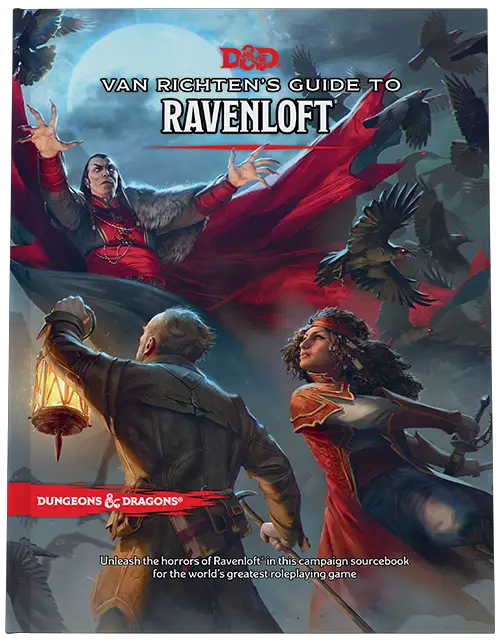
Facilitating Horror
Horror isn’t the easiest genre to run, especially in a collaborative setting (check out my interview with Toni Winslow-Brill for some tips if you’re so inclined). Not only does it require a lot of “buy in” from the party, but it also can’t go too far and touch on real life phobias and trauma. While Wizards has done a great job at emphasizing things like consent in players, I think Van Richten’s features their most robust toolkit yet. There’s an emphasis on pre-game talks about fears and comfort levels, but there’s also suggestions for mid-session checks and post-game talks to make sure everyone is still on the same page and comfortable going forward. I’m sure some old-school dorks will get mad about that but eh, who cares, it’s really nice.
When it comes to the horror itself, there’s a lot of little “theory” tips that help a DM get into the spooky swing of things, expanding on similar tips from previous horror-tinged releases like Rime of the Frostmaiden. These include ways to incorporate sensory details into descriptions, drawing on personal phobias (within reason), and even how to pace a horror adventure juuust right to maximize the fear.
Heroes of Horror
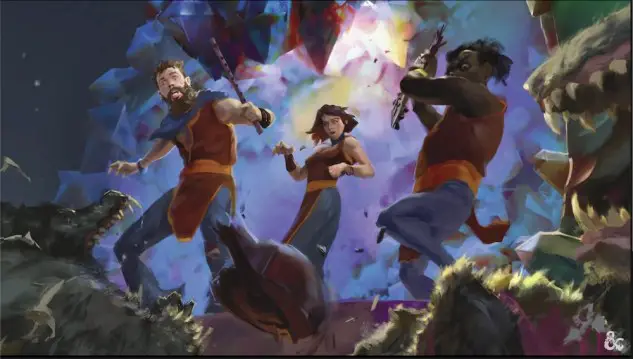
Before the main body of the book, Van Richten’s Guide To Ravenloft codifies some of the horror character options that were previously released as Unearthed Arcana, with some tweaks and changes of course. Three new races are added: The Dhampir, whose half vampiric nature gives them great power but also an insatiable hunger, the Hexblood, who are sort of like tieflings but with hags instead of devils, and the Reborn, a template for a hero who is not quite alive, not quite dead. Players can also take advantage of new class of two new subclass options, the bardic College of Spirits and the Warlock pact with The Undead. The College of Spirits is particularly interesting in Ravenloft due to its focus on tales, essentially finding a way to weaponize ghost stories.
Characters also now have access to the Dark Gifts that may be bestowed upon them by the dark powers that rule Ravenloft. These can be everything from a living shadow to haunting whispers to a second skin that you hide from the world. They give one power at a price, and they’re a unique addition that helps create thematic characters for the setting.
Create-A-Horror
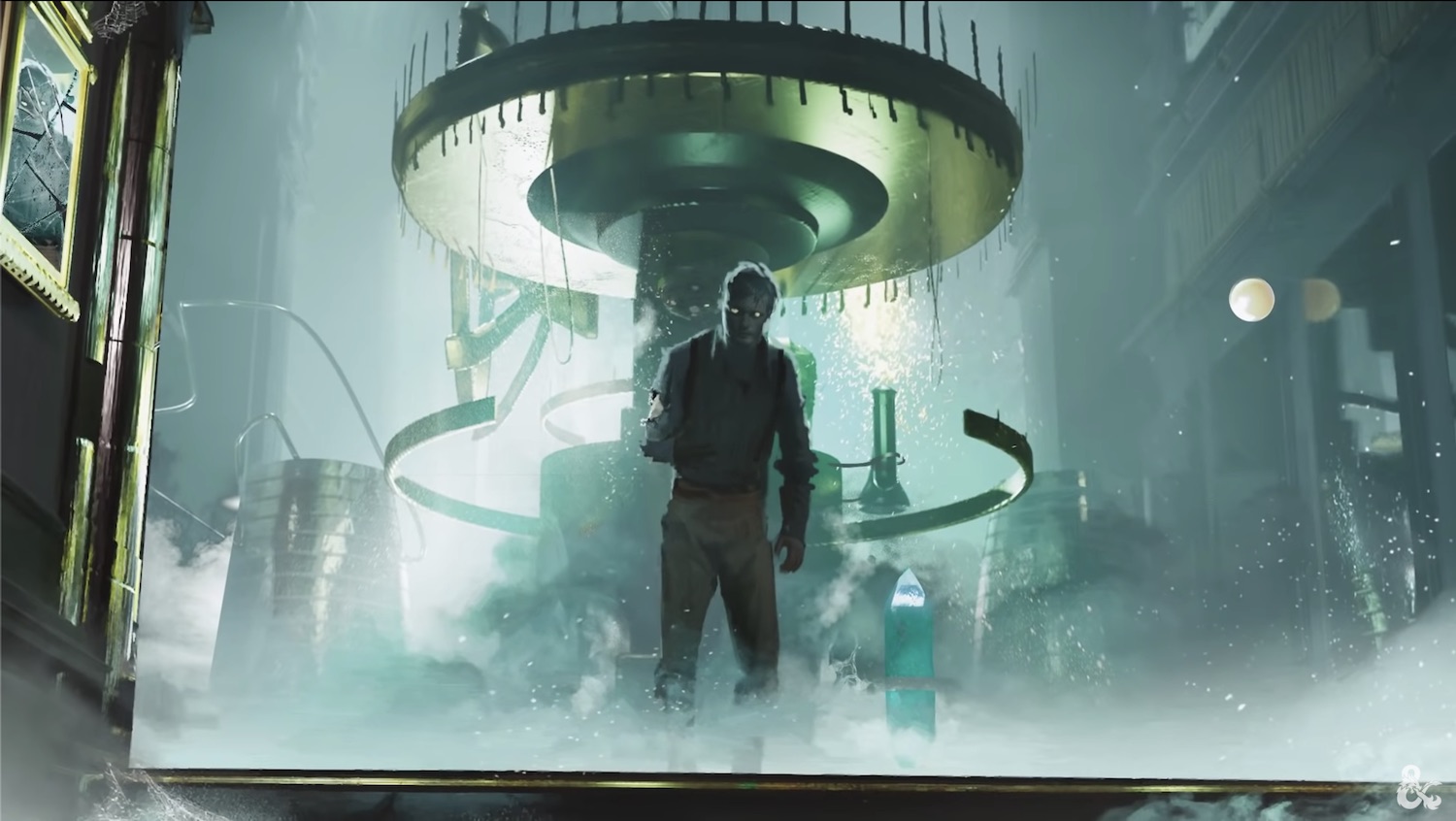
The part everyone is excited about is the new lore for the Domains of Dread, but the most interesting part of the book, for me, is the section just before it that focuses on the creation of one’s own horror story. The existing Domains are great templates and amazing sandboxes to play in, but the more that Wizards can do to empower the DM to create their own stories, the better. And I think Van Richten’s Guide To Ravenloft does a better job than previous books at filling out the toolkit for the DM. The different domains and their lords present a unique opportunity for creation within the game since they allow for a DM to create their own entire mini-setting. There are some connecting things that will ground any creations within Ravenloft, but overall it’s maybe the most power an official supplement has given to a DM this edition.
In service of that, the book goes out of its way to really dig deep into horror and define the different genre of horror that could appear in Ravenloft and do appear in the domains they’ve created. These are things like Body Horror, Cosmic Horror, Ghost Stories, and even Dark Fantasy; the basic building blocks for the story you might be telling. The biggest genres get tables to help a DM figure out appropriate settings, stories, and encounters to really incorporate each genre into the game. Though, of course, that works better for some genres than others thanks to the inherent rigidity of D&D, but they’re a great exercise in storytelling theory nonetheless.
The book ends with some brief additions to the traps and monsters available to DM, especially new forms of undead and creepy eldritch critters to haunt nightmares. The creepiest one might be the Carrionette, which are murderous haunted dolls you need to watch due to their intense desire to possess a body other than their own. One of their number, an evil Pinocchio reference named Maglio, has even been elevated to the status of Dread Lord.
Dreadful Domains
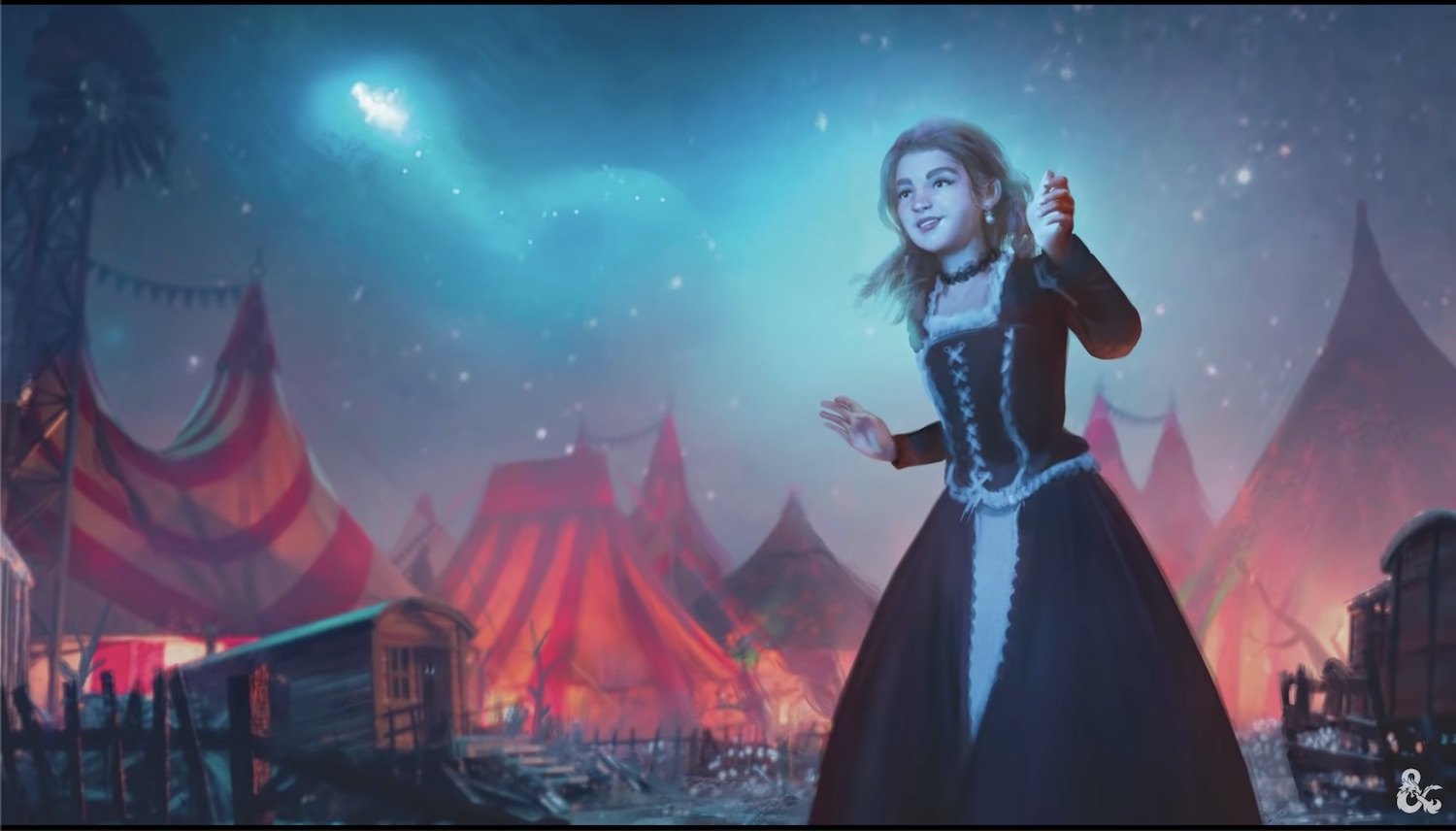
The majority of the book, however, is devoted to the Domains of Dread, the little mini-planes that make up the bizarre Russian Nesting Doll that is Ravenloft. Each of the listed domains have their hallmarks, dread lord, and main horror genres listed, with a whopping seventeen of them described in detail and another twenty-two given a cursory mention that give just enough for a DM to work with if they so choose. Some of them are incredibly obvious pastiches of other horror media, but that’s not necessarily a bad thing. After all, what do horror fans love more than crossovers? I can’t got in deep on all of these, but some of the best include:
- The Carnival, a traveling carnival staffed by fey and run by a cursed Eladrin and her zealot sword.
- Dementliu, a dark and demented (ahem) version of Paris that draws heavily on the works of Edgar Allan Poe.
- I’Cath, a mysterious and surreal city run by a vengeful wizard and haunted by jiangshi.
- Kartakass, where there’s werewolf bards. ‘Nuff said.
- Tepest, a seemingly idyllic land ruled by fey that uses folk horror in a way I’d never expect out of D&D.
There’s an incredibly wide range of characters and stories included in this section, and each domain has plenty of little details to set off the mind, like Dementliu’s Red Widow Cabaret where giant spiders eat the customers. The Dread Lords that rule (almost) every realm are some of the most interesting bosses yet, though interestingly none of them have stat blocks. Most have an approximate equivalent (like Strahd being a vampire or Dr. Viktra Mordenheim being a spy), but leave plenty of room for DM’s who want to use a character above or below where they might normally be.
Lamentations
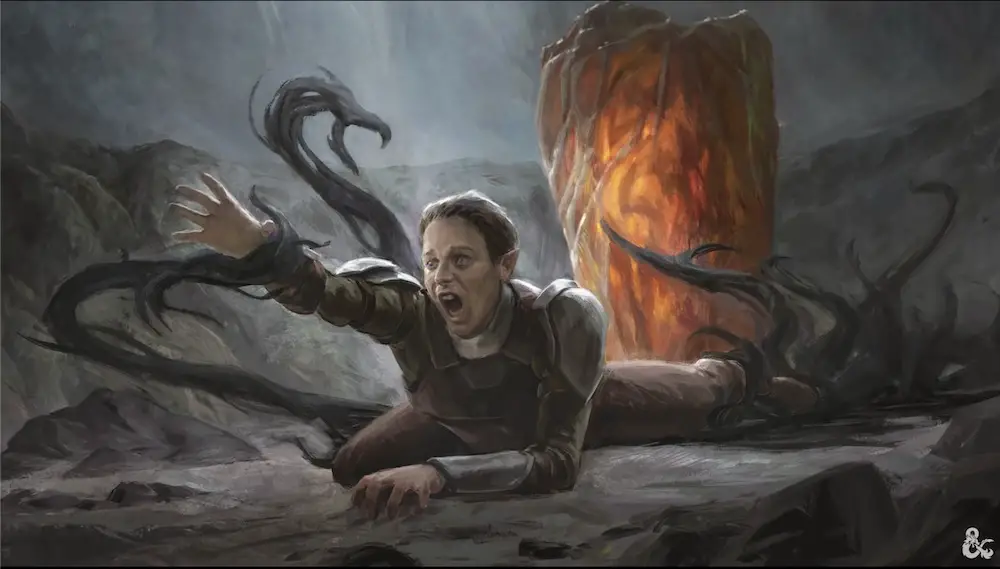
Finally, the book ends with an “introduction” to Ravenloft titled “The House of Lament.” While it obviously is meant to invoke haunted house stories, the adventure is a catch-all that helps players learn about the different quirks of Ravenloft, like the way mist travel works and the use of things like spirit boards. It also touches a bit on every genre of horror mentioned in the book to help both DM’s get a feel for it and let players figure out what genre they might vibe with best. It’s got lots of hooks baked in and incorporates big names for future adventures like Ireena Kolyana, Ez D’Avenir, and Rudolph van Richten.
Stray Thoughts
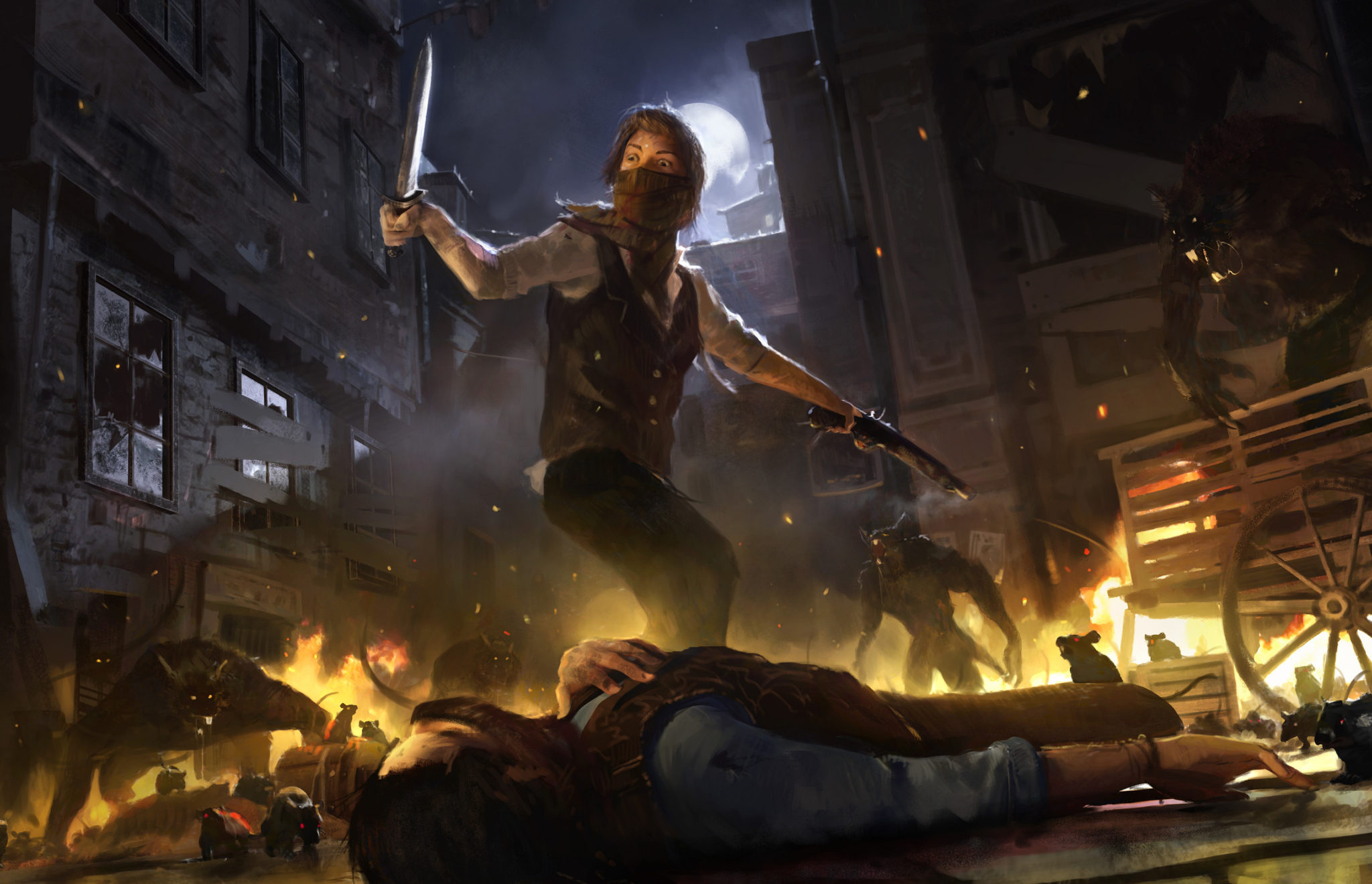
- If you get a chance to pick up the alternate cover, you absolutely should. I know that goes without saying at this point, but the purple foil and art by Scott M. Fischer really make it pop unlike any other so far.
- Always read the disclaimer at the start of the book.
- Ezmerelda d’Avenir, a character from Curse of Strahd who appears on both covers, is going by Ez now after joining up with a Vistani band. I’m not sure what the choice might signify, but it’s of interest.
- Fans of The Mummy will love Har’Akir, which is beautifully pulpy even by this book’s standards.
- The new form of undead known as The Boneless aren’t as complex as some of the other new monsters…but just imagine being slowly attacked by a mass of skin vaguely shaped like a person *shudder*.
You can pre-order Van Richten’s Guide To Ravenloft on Amazon, at Barnes & Nobles, or at your FLGS, the only place to get the alternative cover. You can also order it digitally on most marketplaces like D&D Beyond or Roll20.
Images via Wizards of the Coast
Have strong thoughts about this piece you need to share? Or maybe there’s something else on your mind you’re wanting to talk about with fellow Fandomentals? Head on over to our Community server to join in the conversation!

